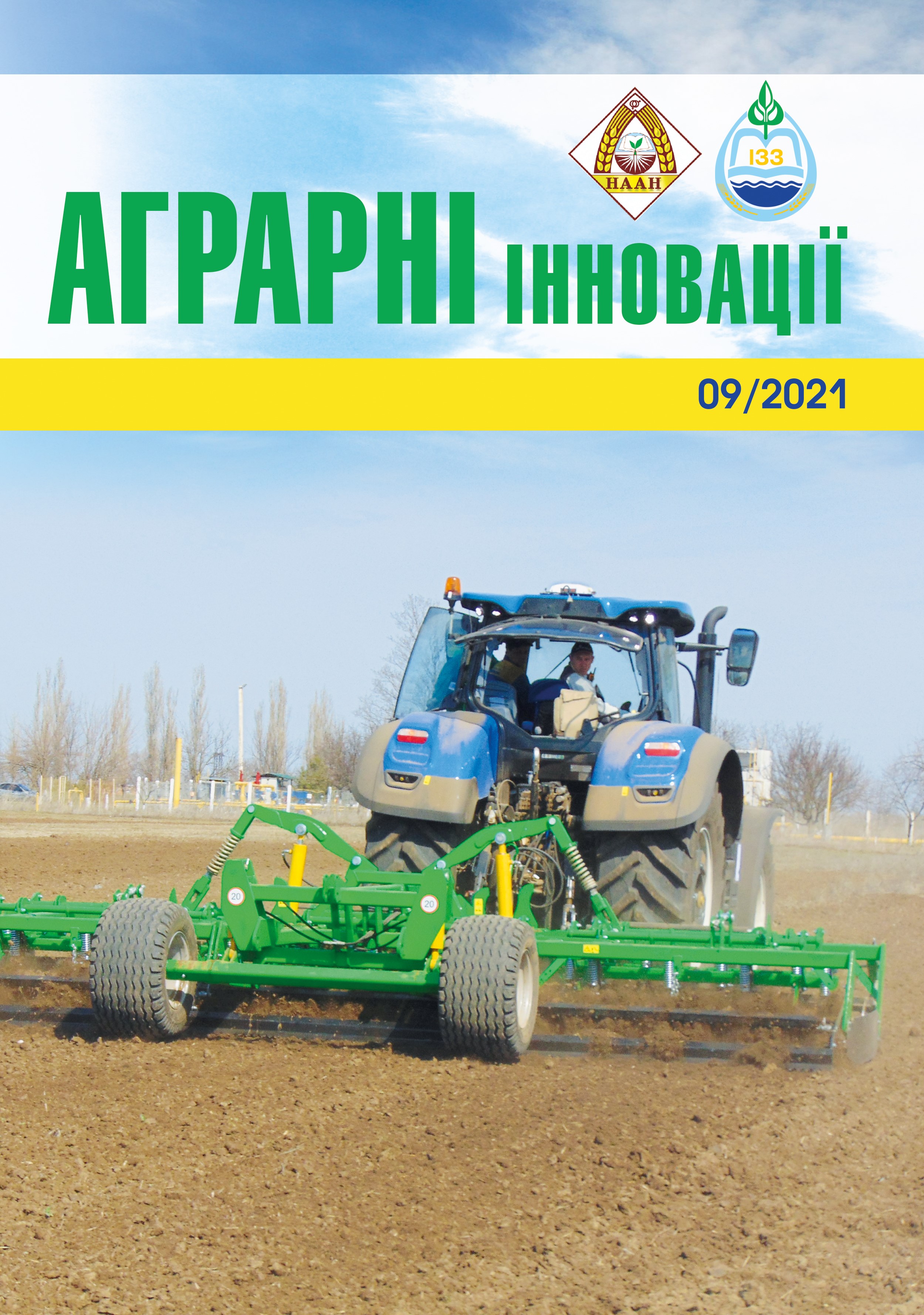Estimation of elements of ecological conversion of production of marketable products of spicy-flavor cultures
Abstract
Purpose. The purpose of the work was to study the range and the state of use of microbiological preparations in agriculture, to study the properties of the preparation “EM-A” and Siaivo-2. Methods. The experimental part of the study was conducted during 2019–2020 under the conditions of Uman National University of Horticulture. Peculiarities of the periods of ontogenesis and phenological phases of plants were studied according to the methods of I.M. Beideman. Field and laboratory studies were performed according to generally accepted guidelines. Results. The study of the dynamics of growth of the leaf area of cornflower plants before the first flowering (first harvest) showed that the use of microbiological preparations by spraying the plant itself significantly affected this indicator. Thus, plants of the variant of treatment with EM-A solution formed the largest area of leaves – it was 61.6 thousand m2/ha in the budding phase and 65.5 thousand m2/ha before cutting the green mass, which is greater than the control variant by 16.3 and 14.1 m2/ha, respectively. Plants of the control variant had the smallest leaf area – 45.3 thousand m2/ha in the budding phase. Subsequently, the increase in the leaf area in plants of this variant was also the smallest – by 6.1 thousand m2/ha for the period of the first moving of the green mass. The plants of the variant of the experiment with spraying with Siaivo-2 solution were leafier, the surface area of the leaves at the time of the first flowering was 56.6 thousand m2/ha, the difference with the control variant is 5.2 thousand m2/ha. Conclusions. EM-A promotes intensive growth of plant development by increasing their aboveground biomass; stimulate vegetative growth of the root system; etc., and in general plant yields. Effective microorganisms improve physical, chemical and biological composition of the soil. Therefore, EM-technology with the use of effective microorganisms is a promising direction to increase the quantity and quality of crops, improve soil fertility.
References
2. Буцяк А.А., Калин Б.М. Мікроорганізми як альтернатива пестицидам у виробництві екологічно безпечної продукції рослинництва. Науковий вісник ЛНУВМБТ імені С.Ж. Гжицького. 2013. Том 15. № 1 (55). С. 30-34.
3. Бровдій В.М., Гулий В.В., Федоренко В.П. Біологічний захист рослин: навч. посіб. Київ : Світ, 2003. 352 с.
4. ЕМ-технологія в рослинництві. ЕМ-України. Кіровоград, 2005. 25с.
5. Патика В.П., Коць С.Я., Волкогон В.В. Біологічний азот. Київ : Світ, 2003. 424 с.
6. Патика В. П. Екологія мікроорганізмів: посібник. Київ : Основа, 2007. 192 с.
7. Коць С.Я., Маліченко С.М., Кругова О.Д. та ін. Фізіолого-біохімічні особливості живлення рослин біологічним азотом. Київ : Логос, 2001. 271 с.






